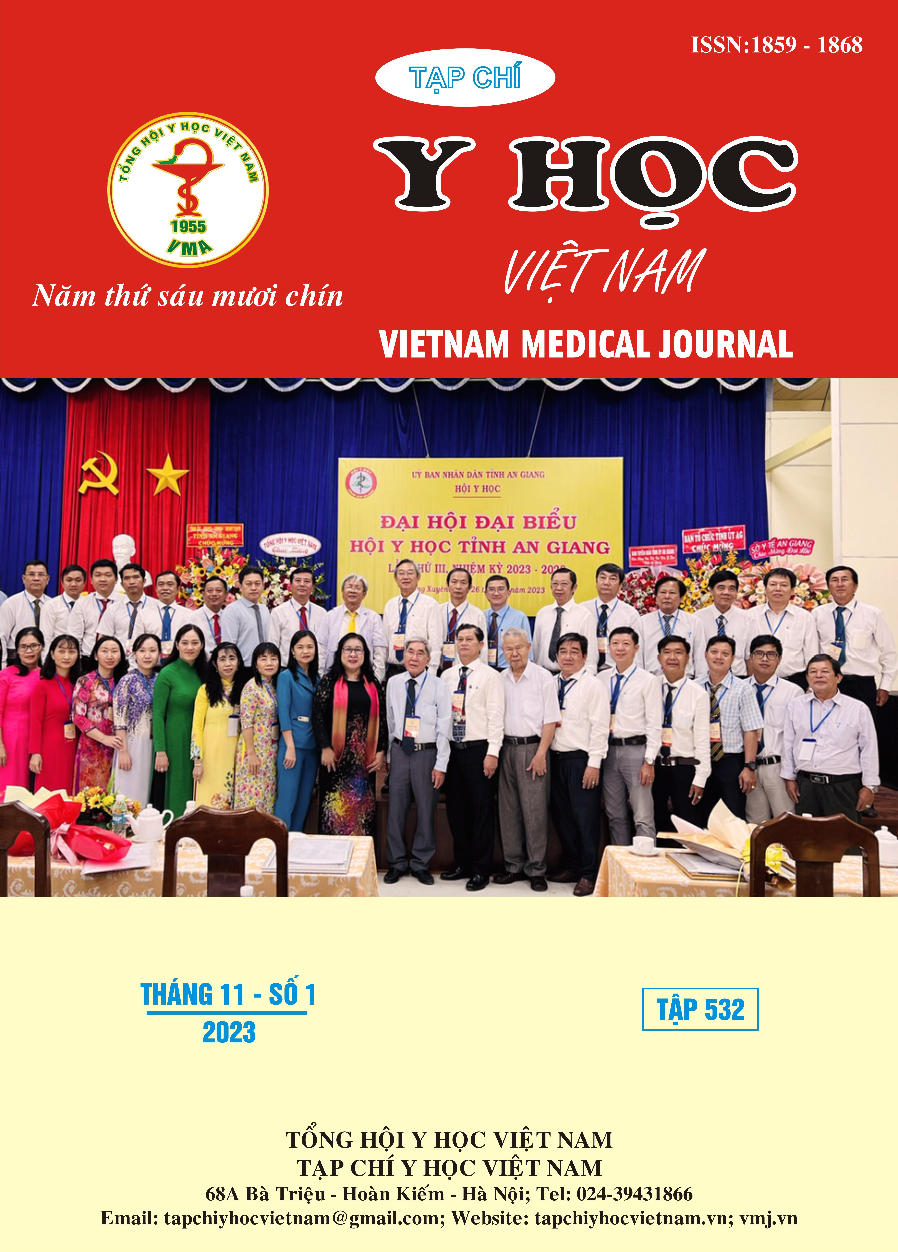SURVEY ON THE SITUATION OF DRUG USE IN GERIATRIC PATIENTS WITH A DIAGNOSIS OF INSOMNIA AND WITHOUT A DIAGNOSIS OF INSOMNIA AT NGUYEN TRAI HOSPITAL IN 2022
Main Article Content
Abstract
Background: The aim of the study was to analyze the drug use of elderly patients with and without insomnia at Nguyen Trai hospital in 2022 and to propose appropriate treatment strategies. Objectives and method: The study was a retrospective, cross-sectional descriptive analysis of electronic medical records of outpatients in 2022. The analysis and evaluation of drug use indicators were performed on two groups of elderly patients, aged 60 years and above, with insomnia and without insomnia. Results: The results showed that there was no significant difference in the average drug cost per prescription (p = 0,319) between the group of elderly patients with insomnia (n = 2,923; 245.846 VND) and without insomnia (n = 23,102; 257.753 VND). The average number of drugs and the percentage of prescriptions and the cost of each prescription containing antibiotics, injectables and vitamins of the group with insomnia were higher between the group without insomnia. The analysis of the drug consumption index based on DDD (Defined Daily Dose) per 1000 cases also showed similarities in the structure and level of drug consumption between the two groups. Conclusion: The study is significant as it provides insights into the drug use of elderly patients with insomnia and may assist in the development of more effective treatment strategies.
Article Details
Keywords
Insomnia, elderly patients, Nguyen Trai hospital, drug utilization
References
2. Chen Y-S. Association between chronic insomnia and depression in elderly adults. Journal of the Chinese Medical Association. 2012;75(5):195-6.
3. Phillips DR. Ageing in the Asia-Pacific region: Issues, policies and contexts. Ageing in the Asia-Pacific Region: Routledge; 2002. p. 19-52.
4. Nguyen TTH. Prevalence of sleep disorder in older inpatients at National Geriatric Hospital 2019/Nguyen Thi Thu Hoai. 2020.
5. Hamza SA, Saber HG, Hassan NA. Relationship between Sleep Disturbance and Polypharmacy among Hospitailzed Elderly. European Journal Of Geriatrics And Gerontology.
6. Forthun I, Eliassen KER, Emberland KE, Bjorvatn B. The association between self-reported sleep problems, infection, and antibiotic use in patients in general practice. Frontiers in Psychiatry. 2023;14:188.
7. Sanchez C, Hale L, Branas C, Gallagher R, Killgore W, Gehrels J, et al. Relationships between Dietary Supplement Intake and Sleep Duration, Insomnia, and Fatigue. Sleep. 2018;41:A72.
8. Mookerjee N, Schmalbach N, Antinori G, Thampi S, Windle-Puente D, Gilligan A, et al. Comorbidities and Risk Factors Associated With Insomnia in the Elderly Population. Journal of Primary Care Community Health 2023; 14:21501319231168721.
9. Kay-Stacey M, Attarian H. Advances in the management of chronic insomnia. BMJ global health. 2016;354.
10. Patel D, Steinberg J, Patel P. Insomnia in the elderly: a review. Journal of Clinical Sleep Medicine. 2018;14(6):1017-24.


